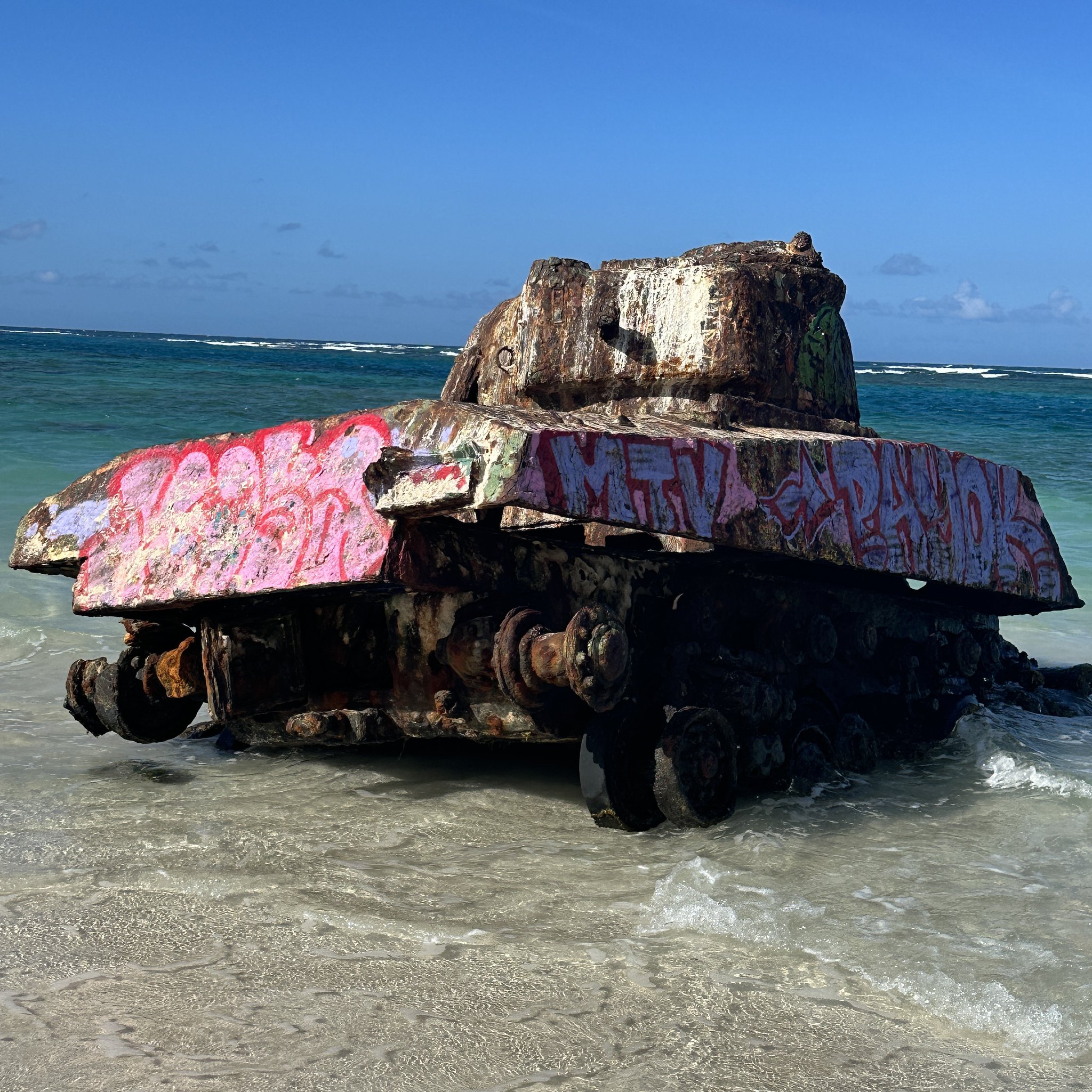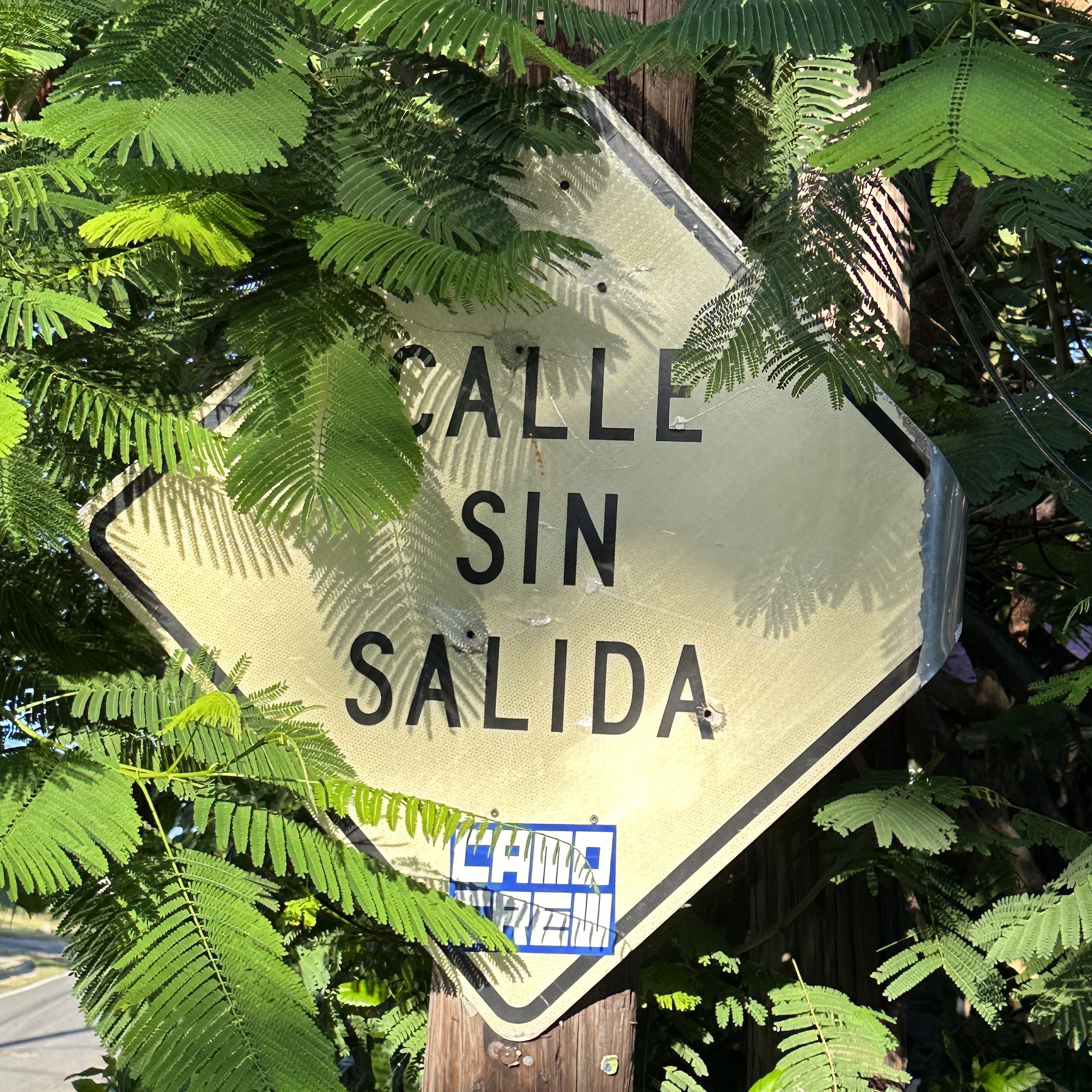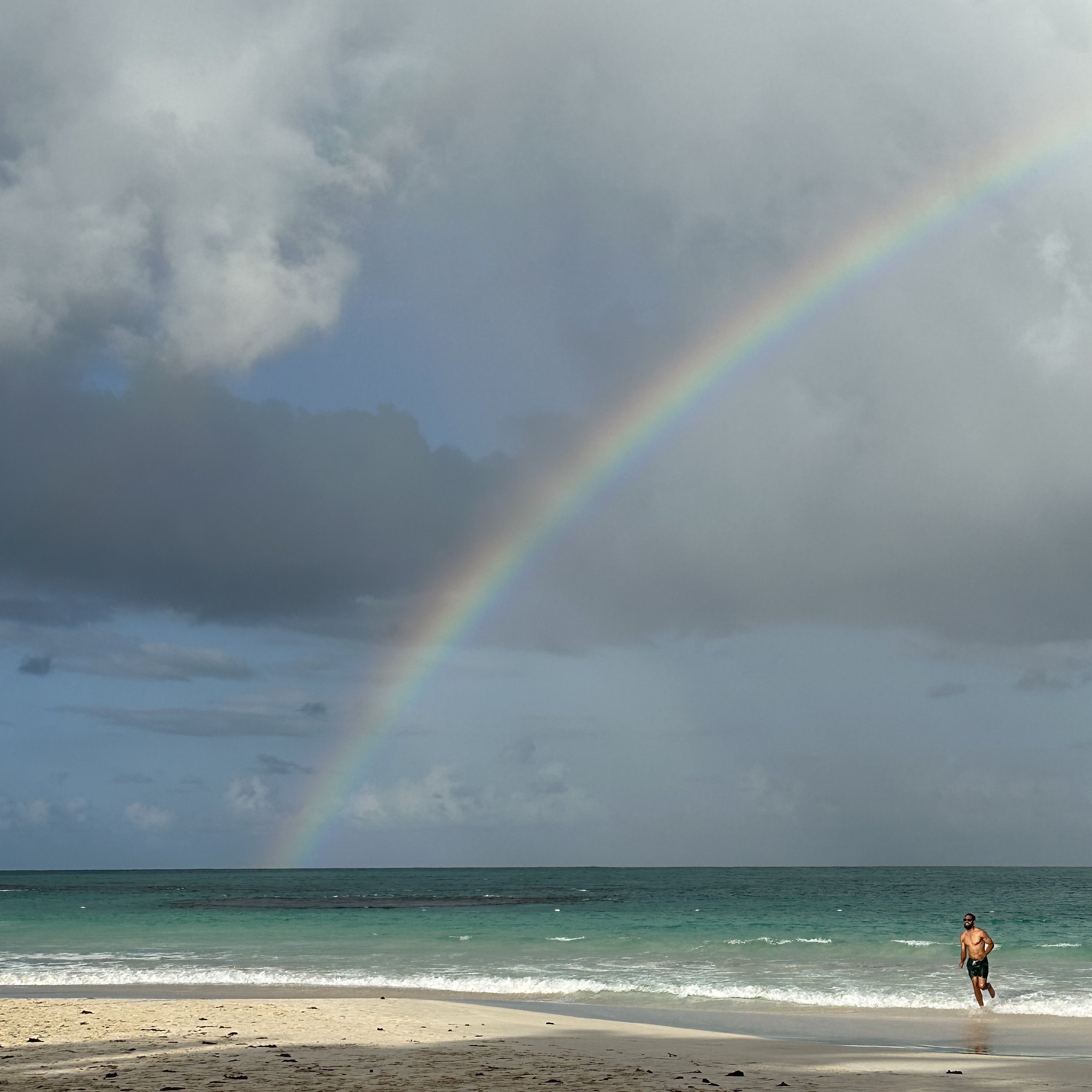
Flamenco Beach, on the tiny Puerto Rican island of Culebra, is difficult to get to from pretty much anywhere, but it is worth the journey.
By my second visit, I had decreed it my all-time favorite beach, besting Venice, Virginia and the Outer Bank beaches with its soft white sand, turquoise blue of the gentle Caribbean sea, swaying palm trees, an open air bar back in the cove, and the promise of a seemingly endless string of sunny days with gentle 85 degree heat…
Each day I would leave my shoes in the car, rent a chair for $5 and walk onto the beach, plop myelf down either on the sands themselves or back under a Palm Tree for shade...
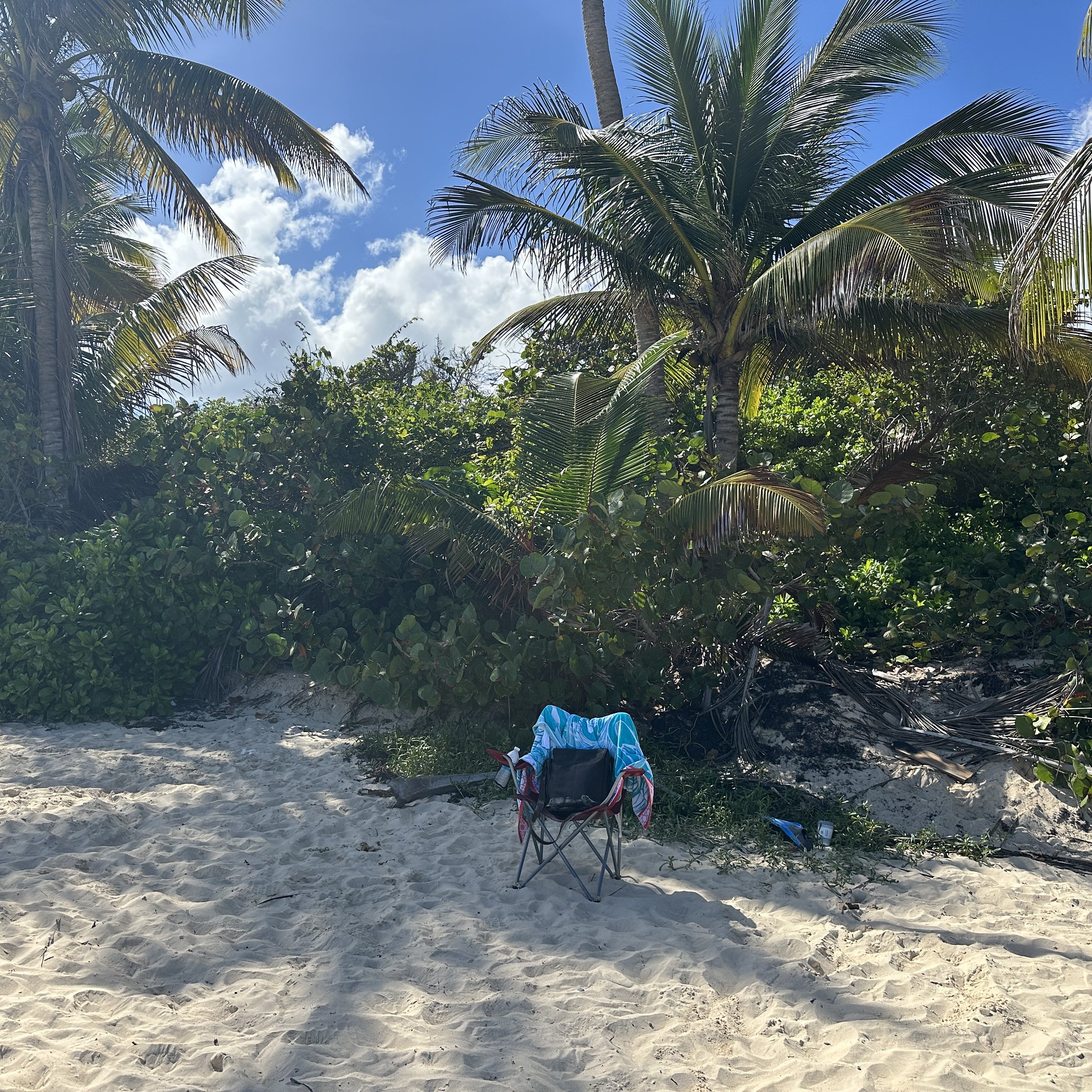
...And stare into to ocean...
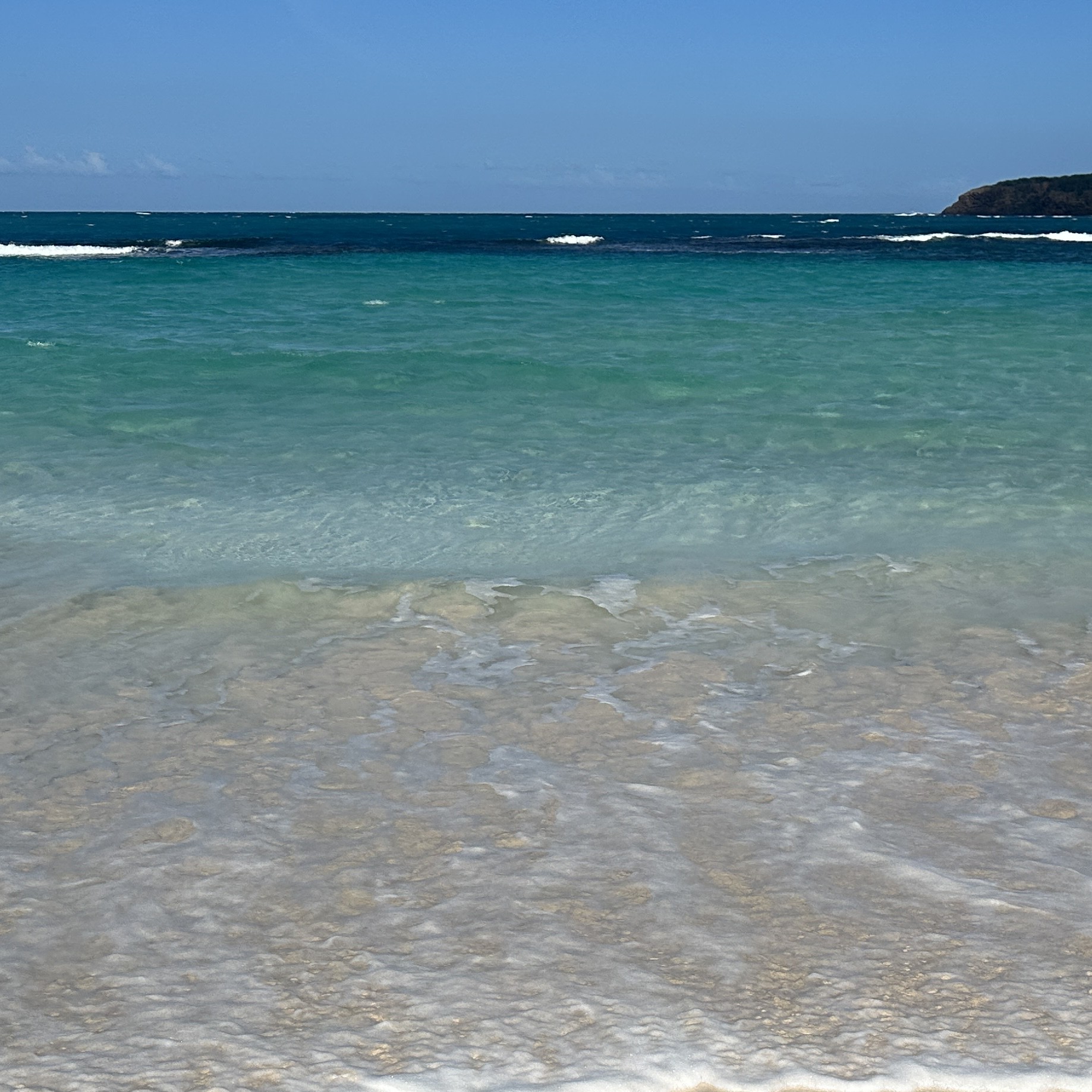
Getting to the beach was a 15 minute drive, from our AirBNB, past the airport, down a windy road through the woods that ended in a small shady parking lot. You really could easily walk the whole distance, and maybe someone will even offer a ride along the way...
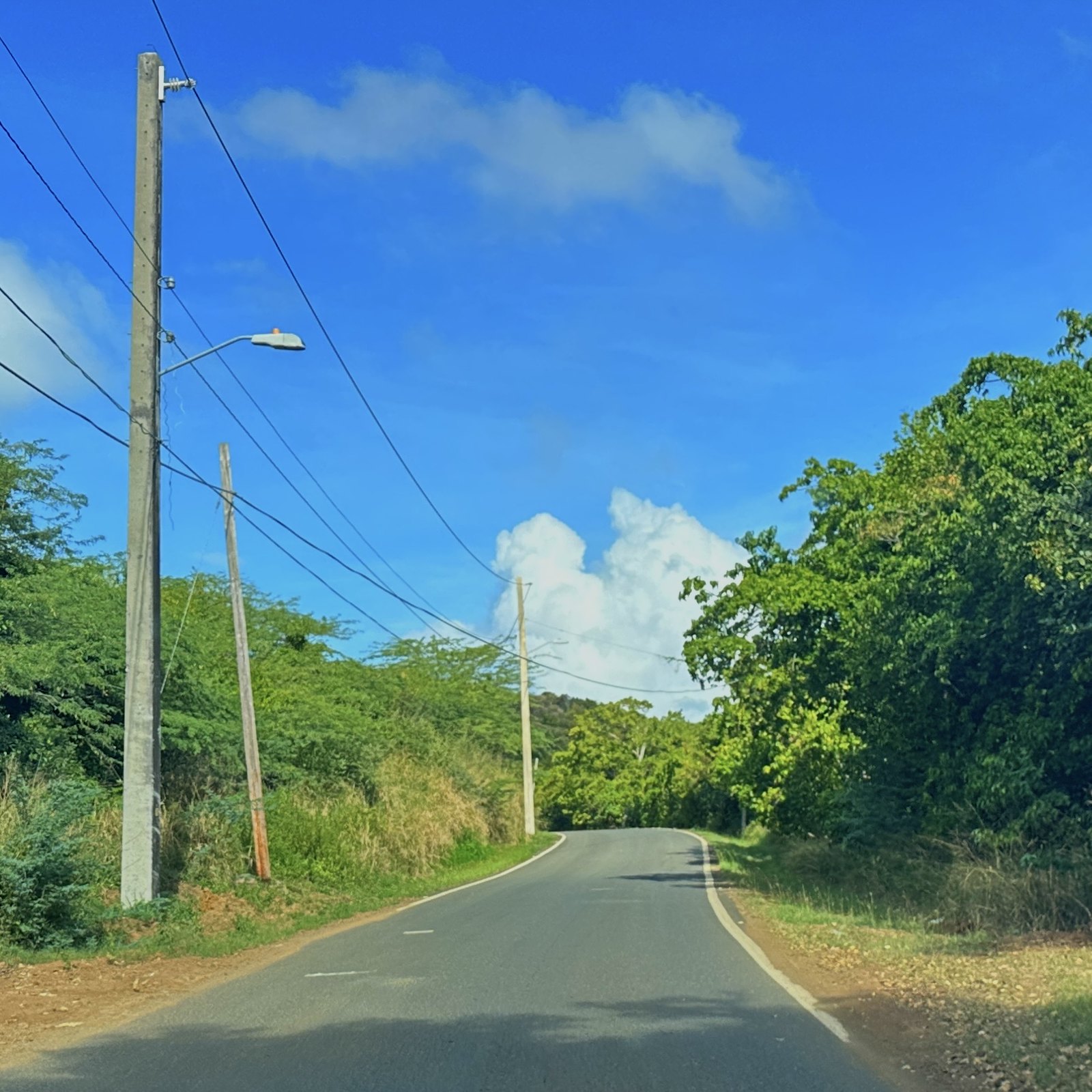
![]()
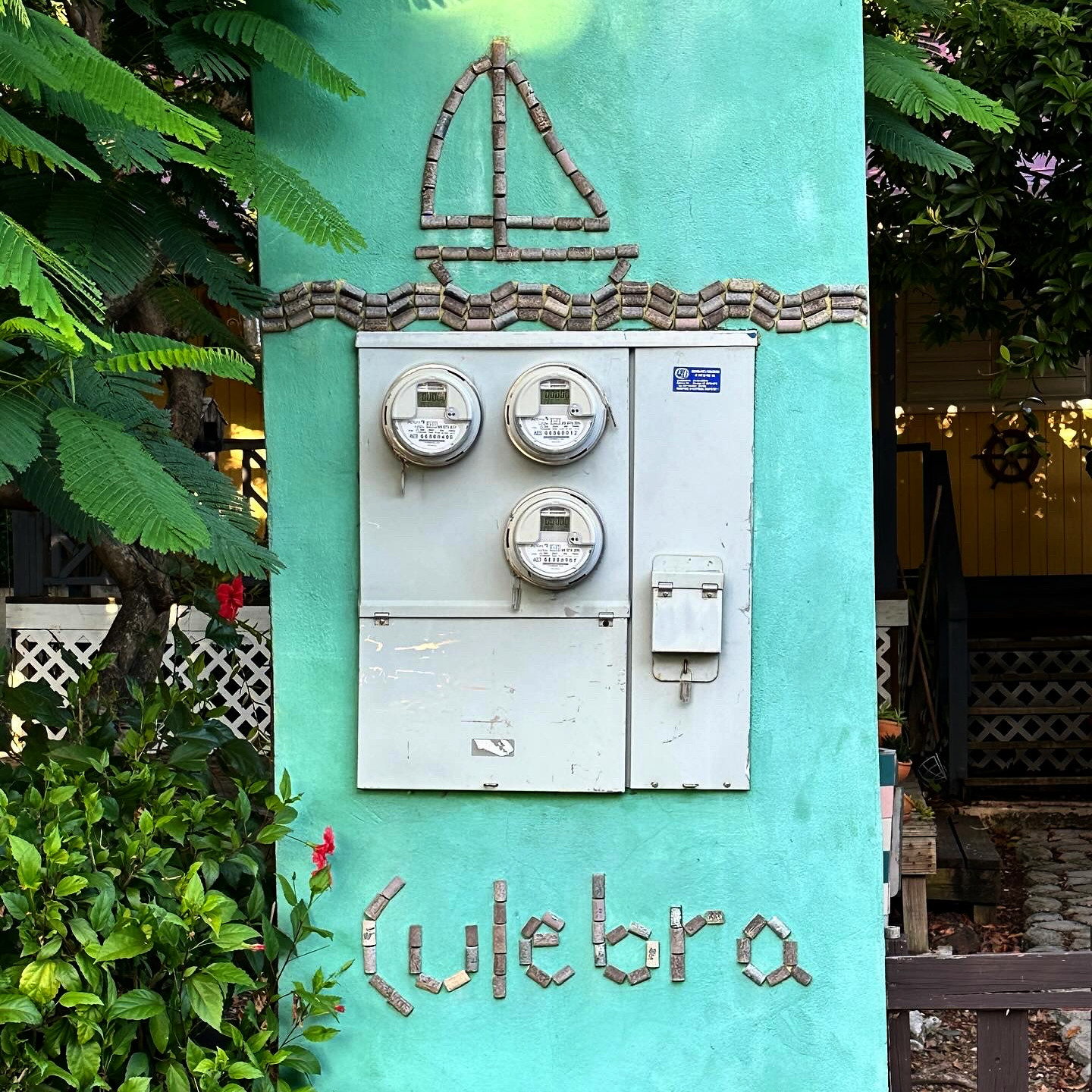
Culebra is an island 7 miles long and 2 miles wide, with a population of 1,700. To get there, Fly to San Juan, Puerto Rico. Then take a flight on a much smaller plane to Culebra. Or, you can take a ferry (leaving out of Le Ceiba), which involves a $100 cab ride out from San Juan. All in all, it can be a 11-12 hour journey from Philadelphia.
Culebra is not a place that runs on Western efficiency. The AirBnB host warned that GPS was iffy here. But the GPS was fine; it was the island itself that had not fully worked out a system of addresses, or not everyone knew of them. If you did not know Spanish, it was helpful to find a cabby that knew your AirBnB ("the Gypsea Mermaid"), and stick with them for the week. I was such a helpless American.
Typically, there are lots of cabs around town, but there were none the night we arrived. It turned out to be a holiday, Three Kings Day (the end of an extended Christmas celebration), so cabs were scarce and we called our AirBnB hosts to get a ride back.
The AirBnB host did not offer an address ---- it was a nice apartment, $1,300 for the whole week -- but rather a set of instructions on how to navigate there from the ferry landing:
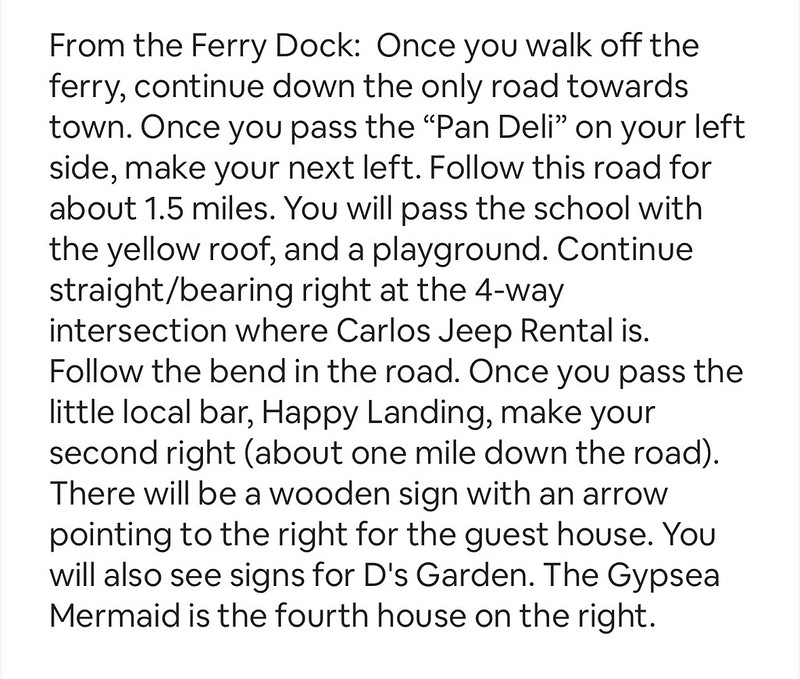
This is what was along the way:
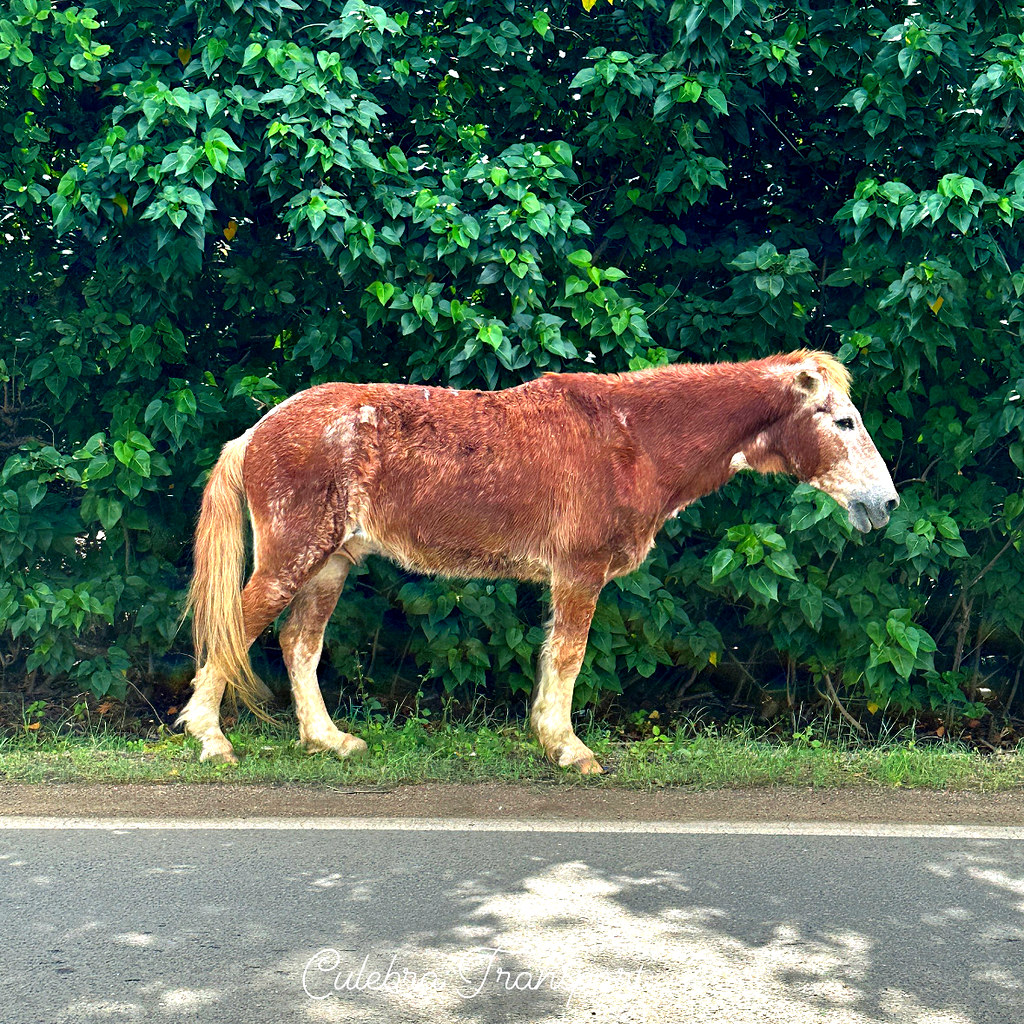
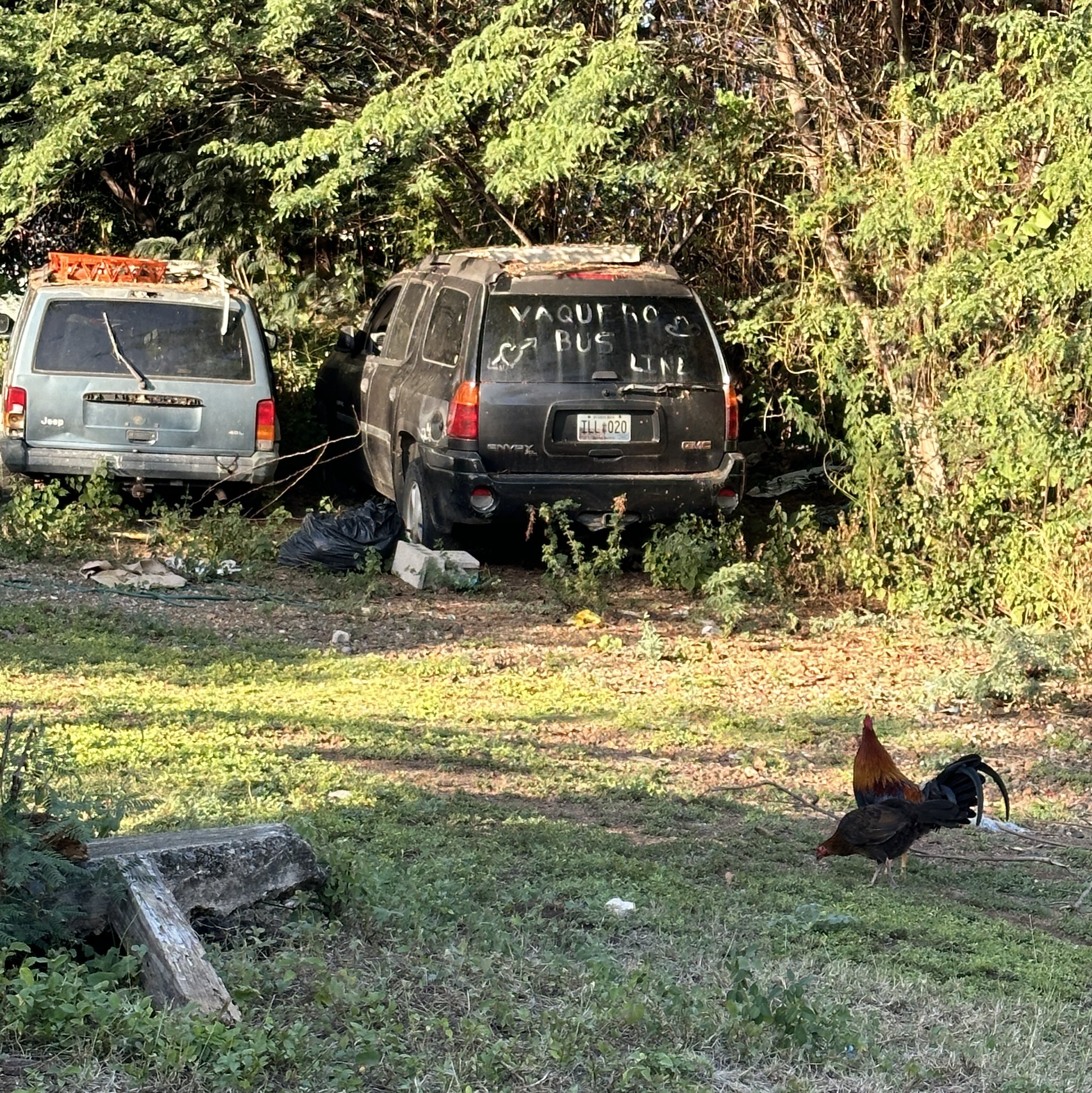
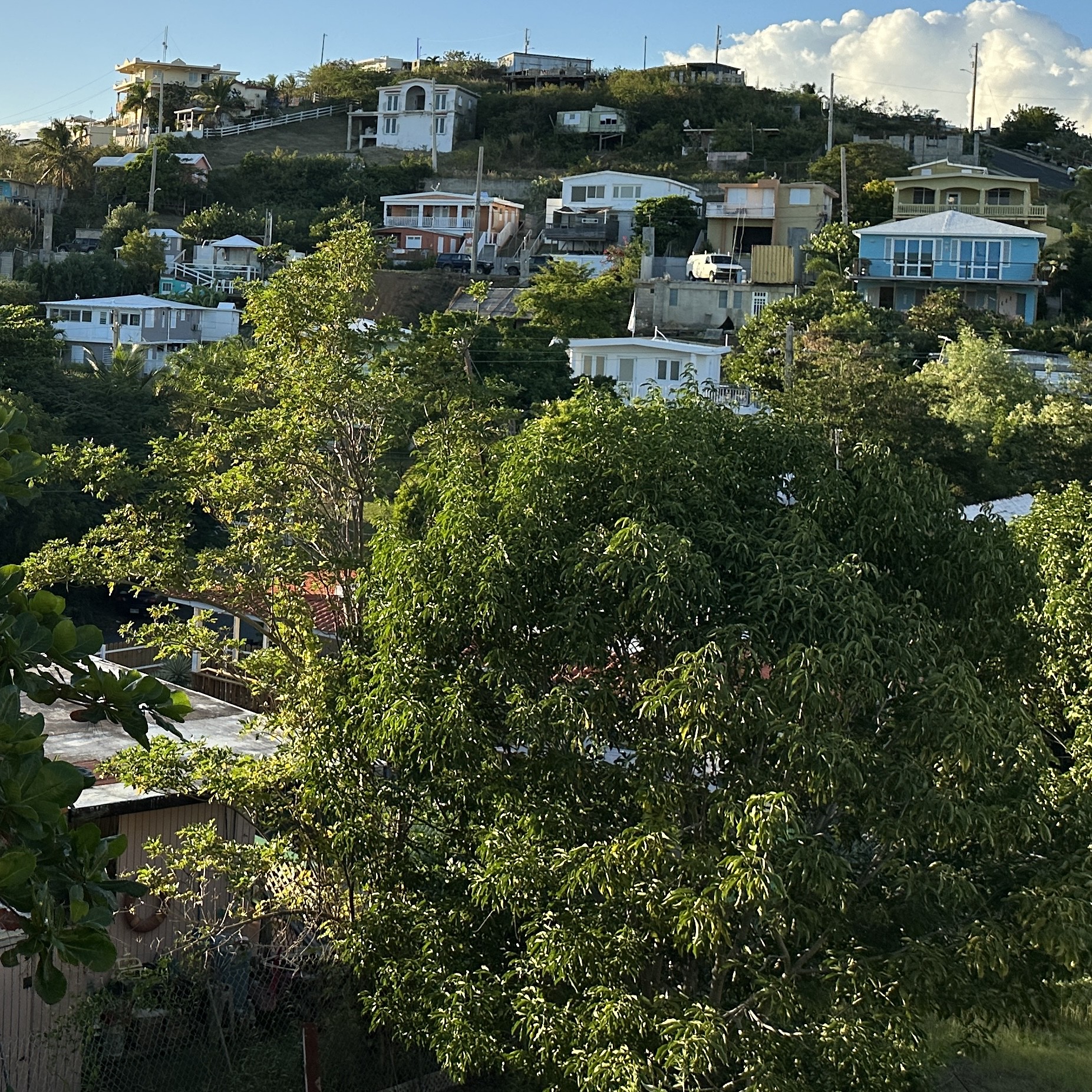
There are a few OK restaurants and bars in town, catering to both locals and tourists. We spent a lot of time at Zaco's Tacos, which also had a bar, and was LGBT-friendly. Dingy Dock had open waterfront dining and a helluva rack o' ribs.
And the local joint, Happy Landing, right next to the airport, had a drive-through window:

![]()
Flamenco itself is a commercial beach, with an admission of $5 per car and $2 per person. But there are showers, a restroom, and a small village of concession stands, renting chairs, umbrellas, snorkel gear. A couple of restaurants served up junk food of both the American and Latin American sort. There was even an open-air bar that operated most afternoons.
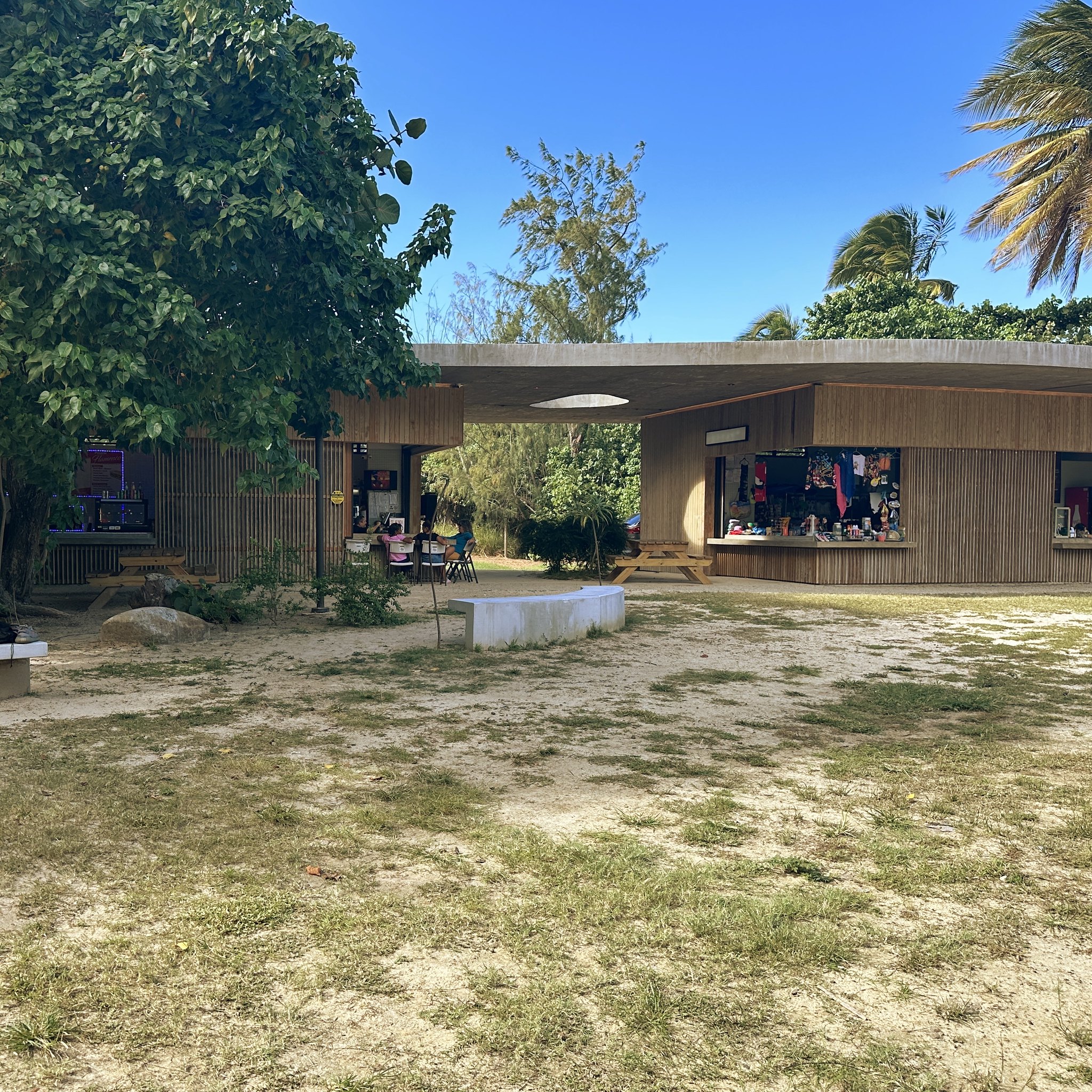
The beach itself is quite contained, maybe about a ½ mile long. It wraps around an inlet on the north east side of the island and buffered by a natural wildlife preserve that takes up a good portion of the island.
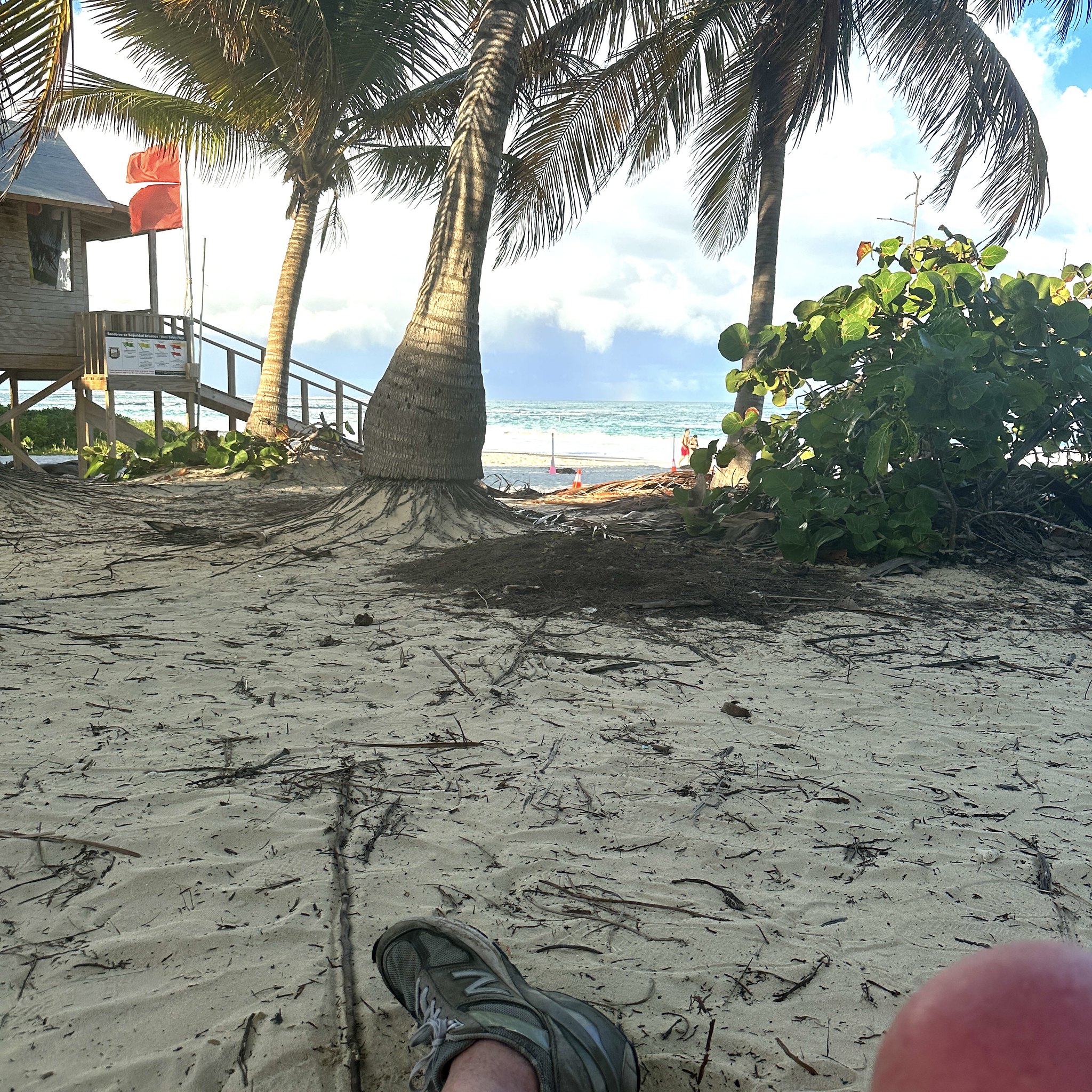
In this particular week, a series of snow storms had pummeled the U.S., and as they made their way out to sea, they fueled the gentle set of waves on this beach.
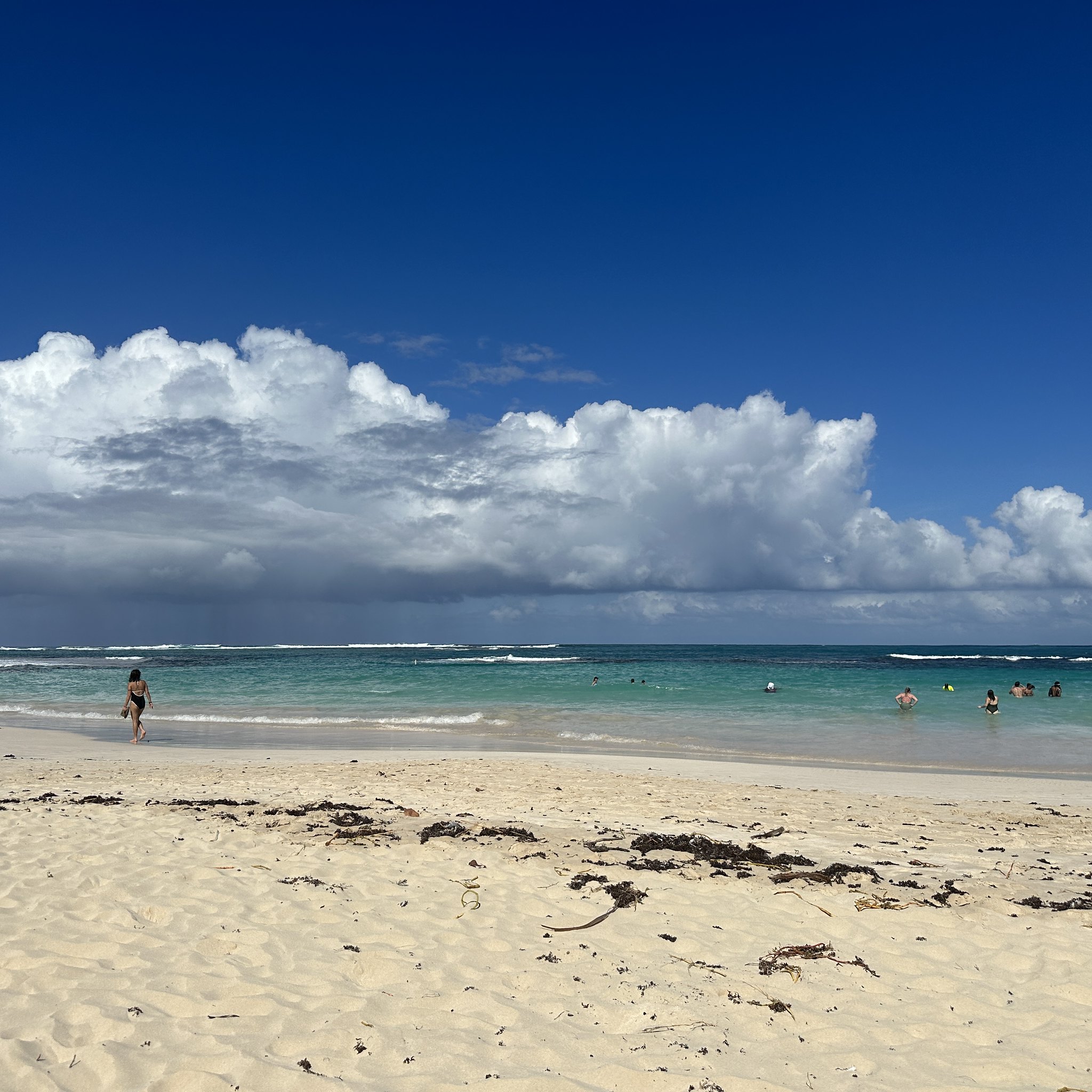
At one point, the lifeguard has waved people out of the surf, though the wave heights would not catch a second glance on any New Jersey beach. But even at the water 's calmest, you could feel it ever insistently pulling you out to sea, no matter the tide.
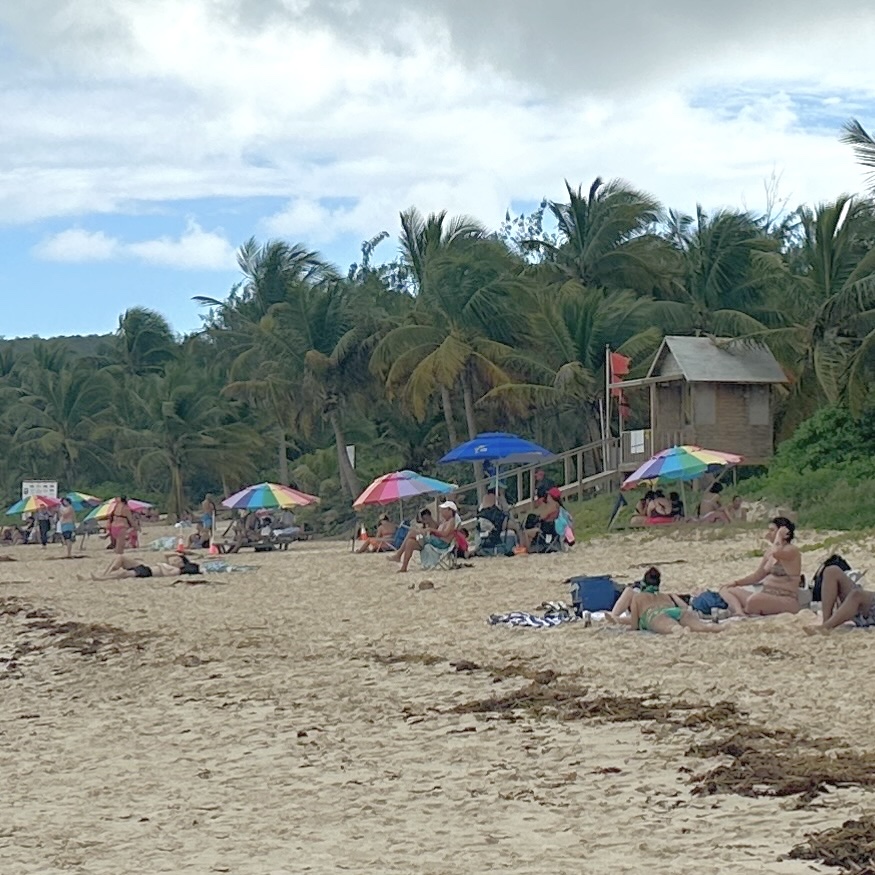
The water though is amazingly clear. I read somewhere that this was due to the lack of stream of river runoff from the islands. Wading in, I saw schools of silver fish darting about my legs. It was blue in a way I have never before witnessed, except maybe in well-kept swimming pools.
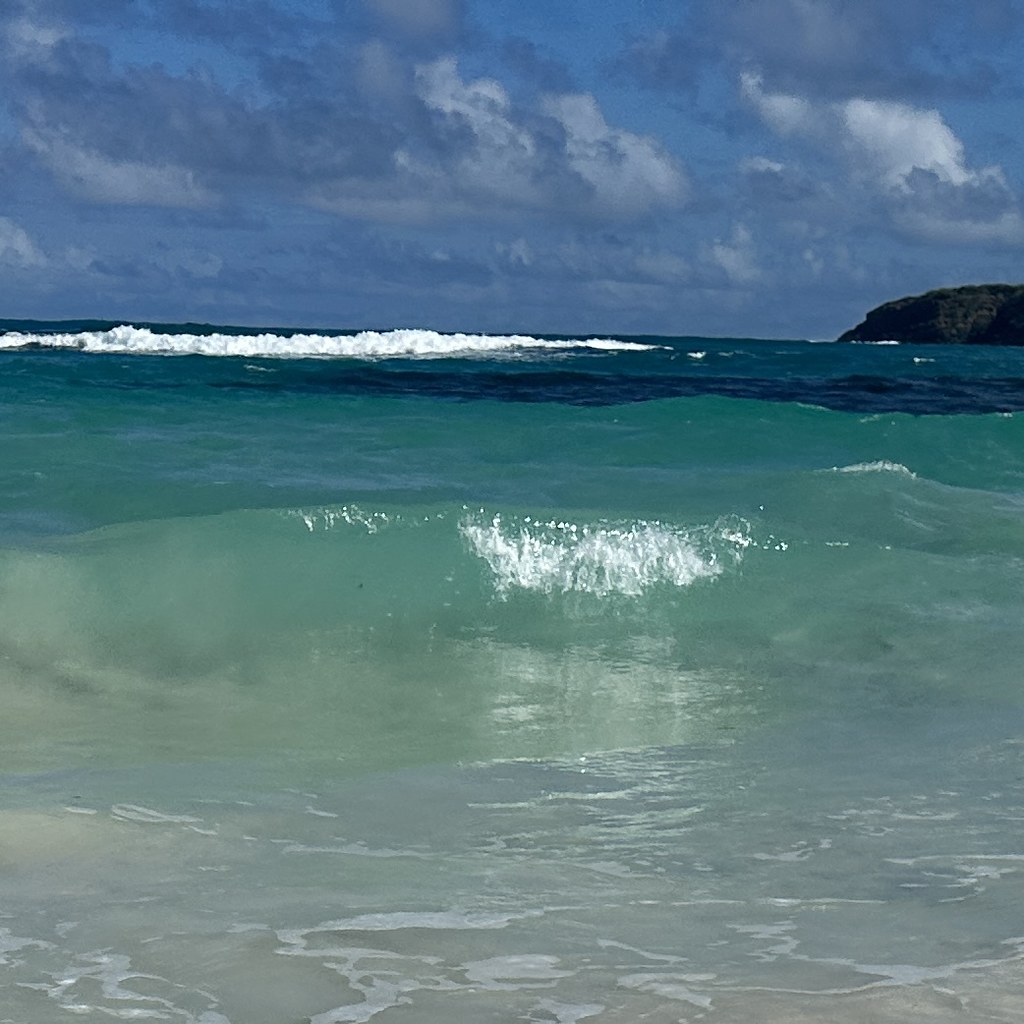
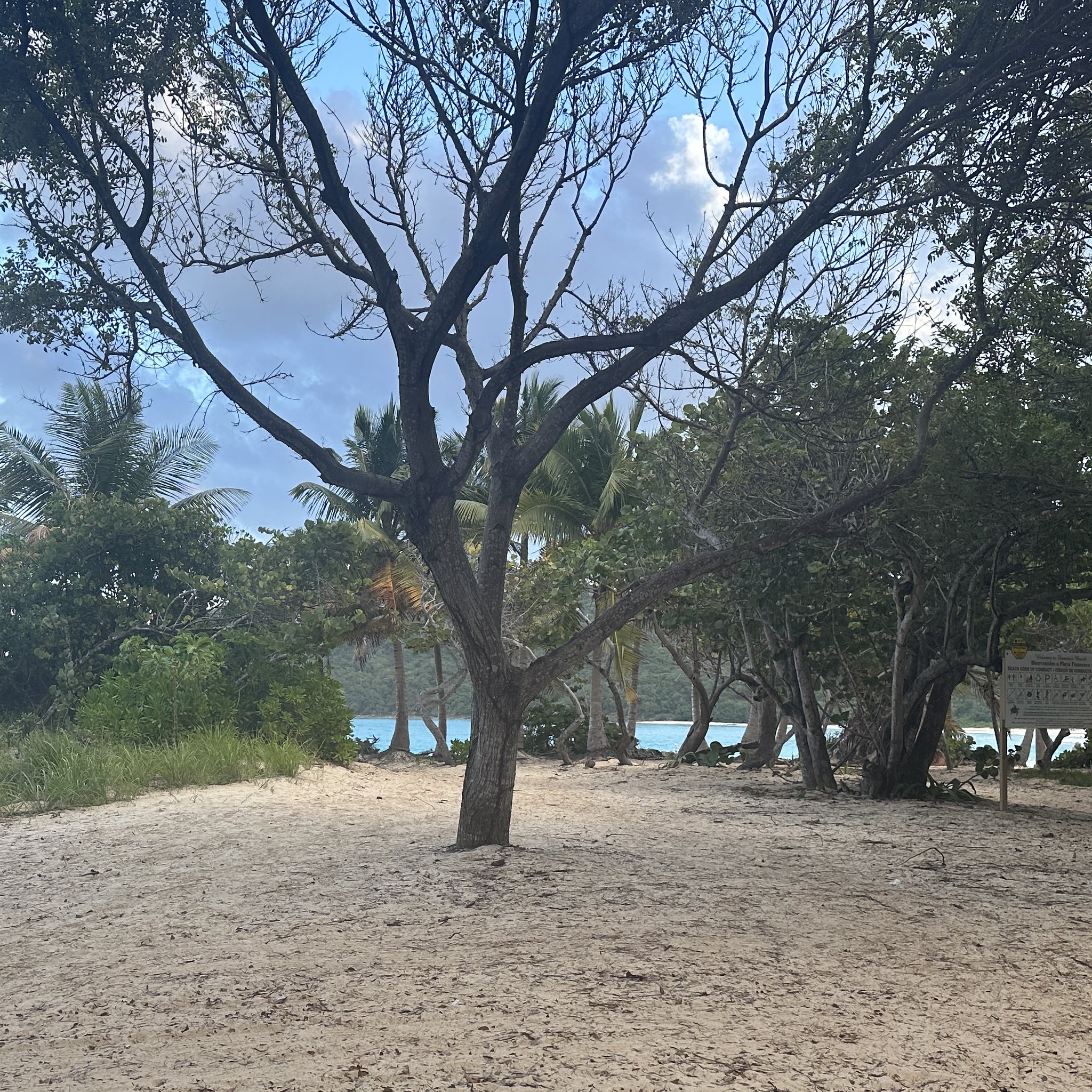
At the tip of the beach there is an abandoned tank, and another one is up in the weeds nearby. Both are festooned by graffiti. The tanks were used as target practice by the U.S. military in the late 1960s. The U.S. used the island, which Spain ceded to the U.S. in 1901, or Naval military practice. The islanders protested this use of their land with such force that the Navy abandoned the location by 1975
